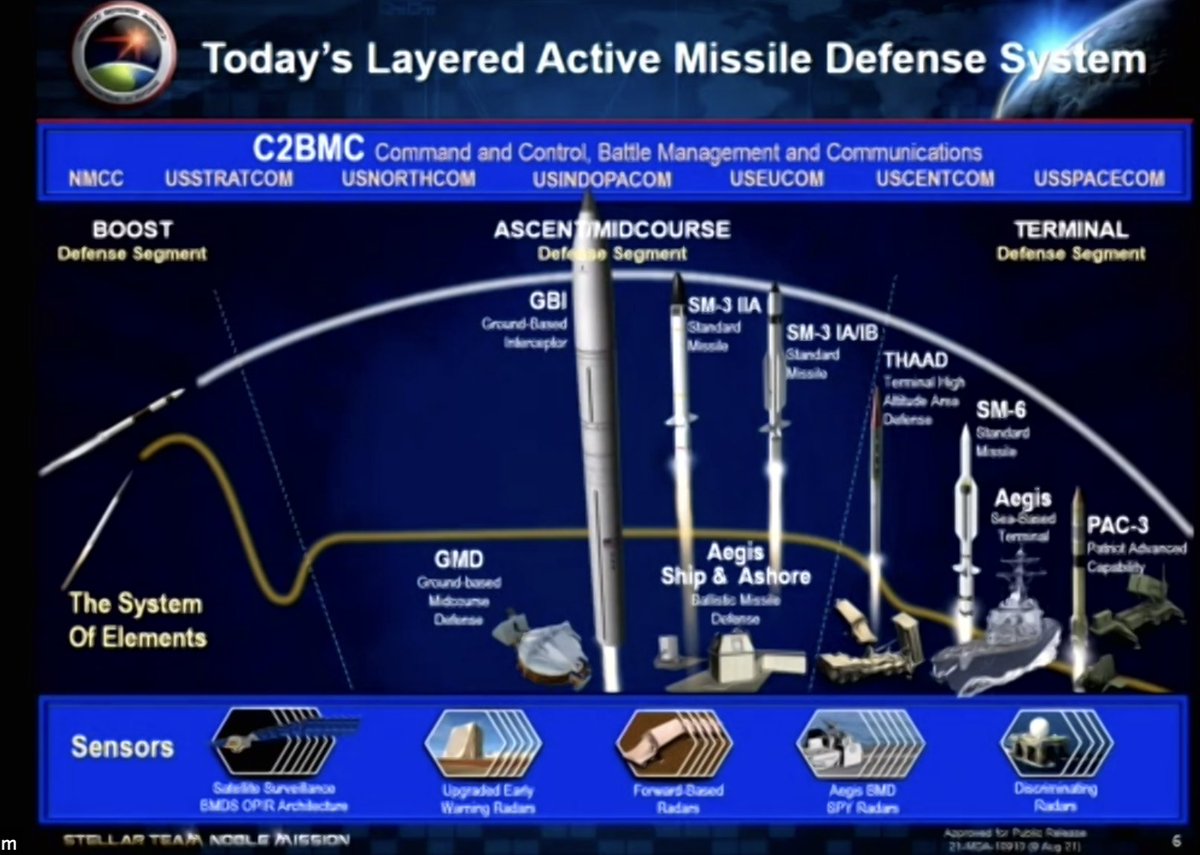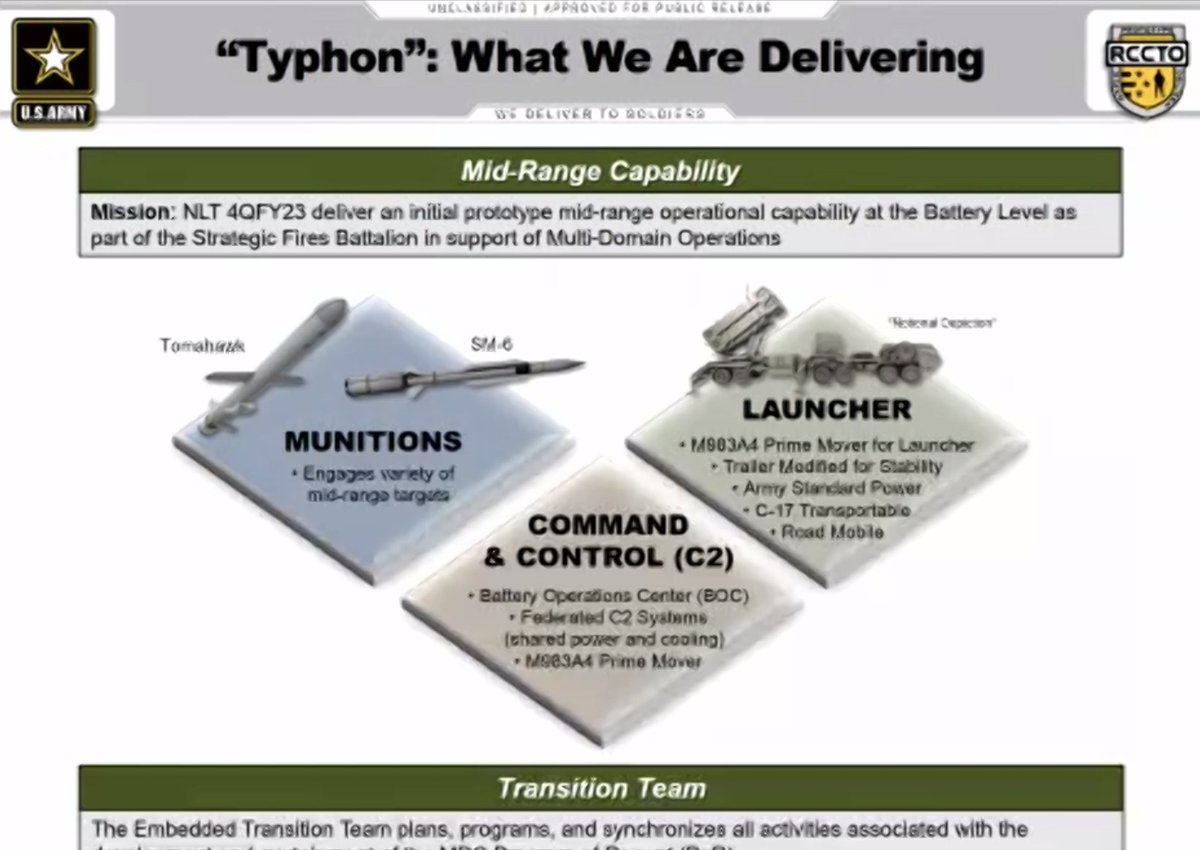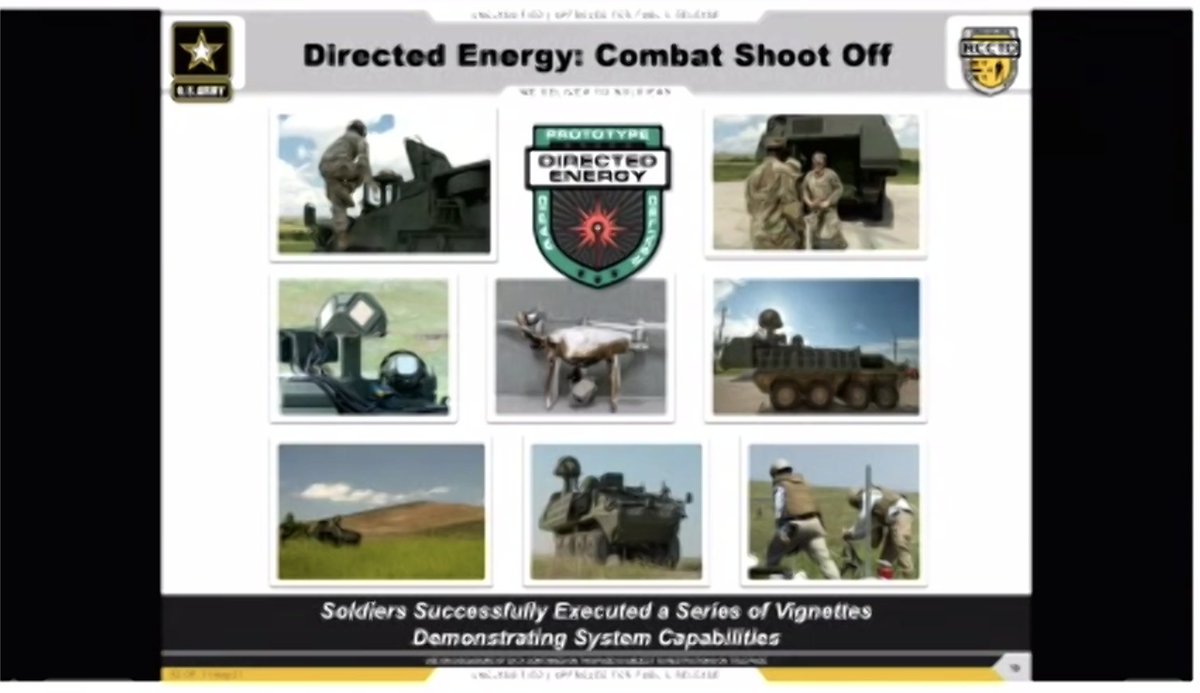
VADM Hill, MDA Director at #SMD2021: “The big change for us as an agency…we used to spend most of our time worried about countermeasures [decoys, etc]…but with these coordinated attacks we see today, it’s about maneuver and speed.”
Hill: Intercepting low, maneuvering threats in "terminal phase...is never where we want to be"
Hill highlights need for layered capability. And here's this year's MDA placemat. Is there a wording change? Today's Layered *Active* Missile Defense System? would dovetail with increasing focus on active and passive defense. 

Hill: Aegis and THAAD integrated system "candidate systems" for Guam and CENTCOM deployments.
Hill: Machine learning is “an awesome frisbee to throw around the Pentagon and bounce off of walls." "It's not magic in my mind...it needs to come out of the S&T world and into the hands of the warfighter as soon as possible." 

Hill: Missile defense tests generate terabytes of data. "Are we assessing all that data? The answer is no." Notes examples where engineers have found previously unseen patterns in telemetry data stream. AI/ML seen as extremely useful for analyzing flight test telemetry.
Waiting for hypersonic weapons to come across ground-based field of view "does not make me feel good at all." Emphasizes need for space-based architecture. Satellites can "see the flash from space," later follow through with tracking.
HBTSS sensors: "It's not new science." Looking at warm earth for warm target can pose challenge, but "we've proven that on the ground," and 2 contractors preparing for launch. HBTSS only satellite with "positional and velocity errors that are tight enough" to do intercepts.
Hill: HBTSS isn't LEO, but "in an inclination that leverages the testing we've done in the INDOPACOM region."
On why Army Mid-Range Capability can't launch an SM-3: SM-6 is "kind of a fire and forget...not as much reliance on uplink/downlink," but SM-3 depends on comms with SPY radar, would cost hundreds of millions to reengineer to launch on the road with MRC.
Hill: "We tend to have more friends than some of these competitors." In his prior work on the Rolling Airframe Missile, "I was stunned by the type of seeker technology Germany was developing."
Hill: "We need to start way to the left" of FMS and see where US can incorporate allies in development, architecture work, and other types of cooperation.
• • •
Missing some Tweet in this thread? You can try to
force a refresh













